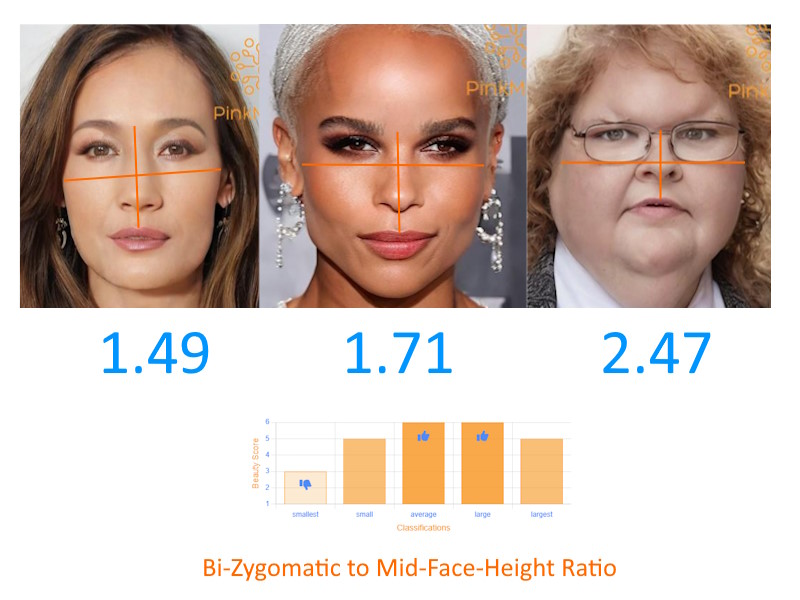Summary Philtrum length, defined as the distance from the the bottom of your nose to the upper lip, has been the focus of several studies. Shin et al. (2014) measured the philtrum length in 251 healthy Korean adults, finding a mean length of 14.3 mm in females. Hasibuan et al. (2024) reported an average philtrum […]
Category: Golden Proportion

Summary Facial width-to-height ratio (fWHR) is a measure comparing the width of a person’s face to its height. The width is measured at the upper bizygomatic width, while the height is from the top of the eyelids to the top lip. This ratio has been proposed as a sexually-selected signal in humans. A research found […]
Summary The eye-mouth-eye (EME) angle refers to the angle formed between the eyes and the mouth, generally indicating how far apart the eyes are set relative to the mouth. Danel and Pawlowski (2007) established that the EME angle is sexually dimorphic, with females having a larger angle (50.16°) compared to males (47.68°), suggesting that a […]
Summary The blog explores the intriguing concept that a mix of attractive and less attractive features can enhance overall attractiveness. Langlois et al. (2000) study in the “Journal of Experimental Psychology” found that slight asymmetries in symmetrical faces can make them more memorable and engaging, suggesting that imperfections can contribute to attractiveness. The study notes […]
Summary The blog examines the disparity between subjective self-assessments and objective evaluations of attractiveness, referencing several studies. Nestor et al. (2010) found that women rate their own facial attractiveness higher (average subjective rating of 4.85) than external judges do (average objective rating of 3.61), illustrating a tendency for self-favorable perceptions. Tobias Greitemeyer’s article explores how […]
Summary The philtrum length, the distance from the base of the nose to the top of the upper lip, has been studied for its differences between genders and impact on attractiveness. Shin et al. (2014) found that various aspects of the upper lip, including philtrum length, are larger in males than females. Zankl et al. […]
Summary The bi-gonial width (distance between jaw’s lateral points) and bi-zygomatic width (distance between cheekbones’ lateral points) determine facial shape, differing in males and females. Altman (2012) found males have wider bi-gonial widths due to angular jaws, resulting in a larger bi-gonial to bi-zygomatic ratio. Lakhiani and Somenek (2019) observed that males’ inter-zygomatic width equals […]
Summary The face height middle-third to lower-third ratio is crucial in facial aesthetics and attractiveness, comparing the middle third (eyebrows to nose base) to the lower third (nose base to chin) of the face. Lakhiani & Somenek (2019) noted that females typically have a smaller mandibular width and angle flare, a rounder and smaller chin, […]

Summary In the realm of facial aesthetics, longer eyebrows are seen as a hallmark of masculinity. Gupta et al. (2017) in their study published in the Journal of Cutaneous and Aesthetic Surgery noted that the average eyebrow length for men is 5.5 cm compared to 5.0 cm for women. This indicates that longer eyebrows contribute […]
Summary A larger ratio of mouth-width to nose-width is considered attractive. Research shows that the width of a person’s mouth compared to their nose can influence how attractive they’re perceived to be. Dawei et al. study in 1997 found that a mouth width about 1.5 times larger than the nose width is generally seen as […]